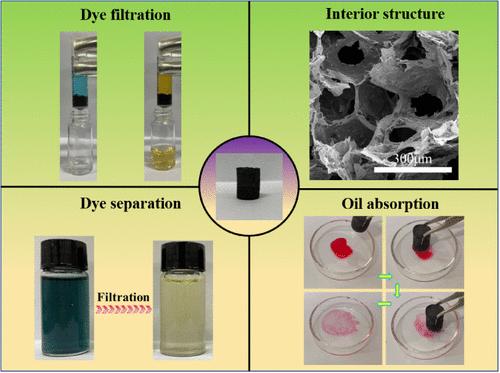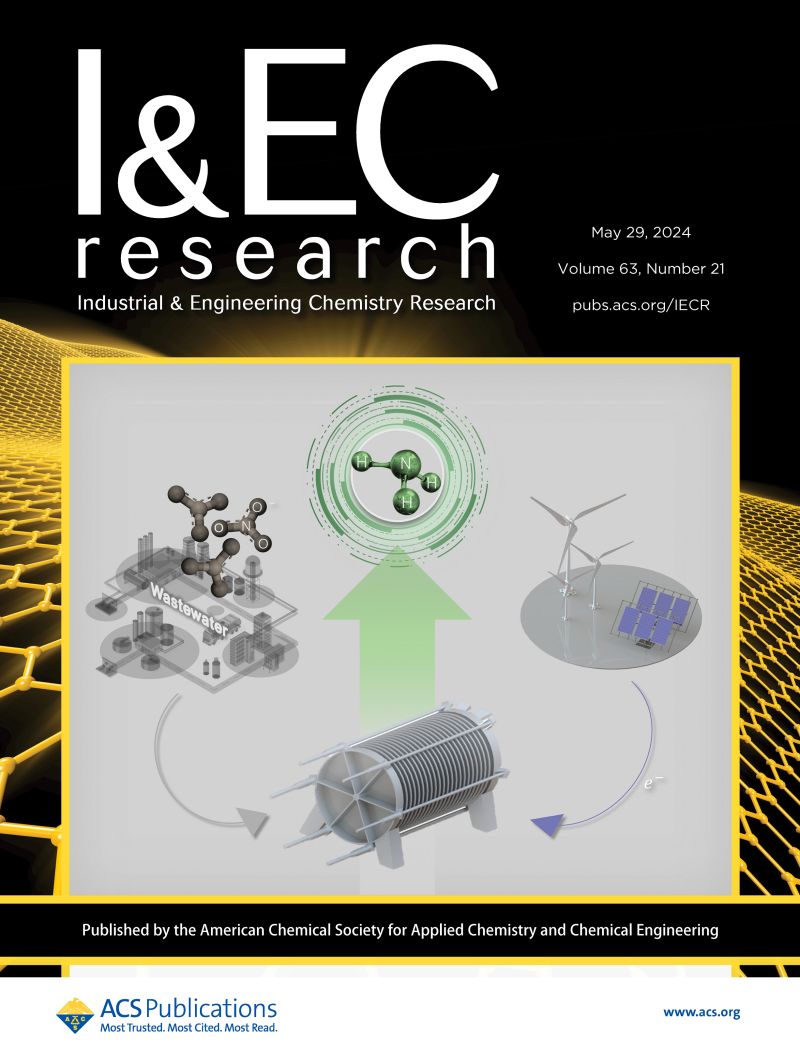广谱吸附/吸收有机污染物的氨基功能化活性炭/石墨烯气凝胶
IF 3.9
3区 工程技术
Q2 ENGINEERING, CHEMICAL
引用次数: 0
摘要
环境友好型碳基气凝胶被认为是去除水溶性污染物和提取泄漏有机溶剂的有效吸附剂和/或吸附剂。采用微泡技术、一步冷冻(- 18°C 6 h)、两步水热还原(85°C和120°C)和氨基功能化(在柠檬酸铵溶液(60 mg/mL)中)制备了具有高孔隙结构和良好亲水性的氨基功能化活性炭/石墨烯气凝胶(KAC-GA@N)。我们的制备策略使其具有非凡的化学和机械稳定性。它可以作为一种优良的吸附剂用于去除不同的有机污染物。此外,KAC-GA@N对阳离子染料(亚甲基蓝,MB)的亲和性优于阴离子染料(甲基橙,MO)(平衡时为183.73 mg/g比88.31 mg/g),具有较好的选择性分离离子染料的能力。准二级动力学模型和Langmuir等温线模型可以很好地描述其间歇吸附过程。固定床动态吸附-解吸循环实验证明了KAC-GA@N具有良好的实际应用潜力(第一次过滤分别捕获了约88.2%的MB和39.7%的MO)和良好的可重复使用性。提出了一种可能的吸附机理,并进行了详细讨论。KAC-GA@N对各种有机溶剂有较高的吸附能力和吸附速率。KAC-GA@N气凝胶有效地解决了粉状活性炭颗粒的回收问题,并在有机污染物的水处理中显示出强大的实际应用潜力。本文章由计算机程序翻译,如有差异,请以英文原文为准。

Amino-Functionalized Activated Carbon/Graphene Aerogel with Broad-Spectrum Adsorption/Absorption for Organic Contaminants
Environmentally friendly carbon-based aerogels have been regarded as effective adsorbents and/or absorbents for the removal of water-soluble contaminants and the extraction of leaking organic solvents. A practical and facile method was proposed for preparing amino-functionalized activated carbon/graphene aerogels (KAC-GA@N) with a highly porous structure and good hydrophilicity, wherein microbubble technology, a one-step freezing process (−18 °C for 6 h), two-step hydrothermal reduction (85 and 120 °C), and amino-functionalization (in ammonium citrate solution (60 mg/mL)) were employed. Our preparation strategy provided it with extraordinary chemical and mechanical stability. It can be used as an excellent adsorbent for the removal of different organic pollutants. Moreover, KAC-GA@N had a better affinity toward cationic dye (methylene blue, MB) than anionic dye (methyl orange, MO) (183.73 mg/g vs 88.31 mg/g at equilibrium), showing a good capability of selectively separating ionic dyes. Its batch adsorption process could be well described by the pseudo-second-order kinetic model and the Langmuir isotherm model. The fixed-bed dynamical adsorption–desorption cycle experiments proved the excellent practical application potential (about 88.2% MB and 39.7% MO were separately trapped for the first filtration) and good reusability of KAC-GA@N. A possible adsorption mechanism was proposed and discussed in detail. KAC-GA@N had a higher absorption capacity and rate toward various organic solvents. The KAC-GA@N aerogel efficiently addresses the recycling issue of powdery activated carbon particles and shows strong potential for practical use in the water treatment of organic pollutants.
求助全文
通过发布文献求助,成功后即可免费获取论文全文。
去求助
来源期刊

Industrial & Engineering Chemistry Research
工程技术-工程:化工
CiteScore
7.40
自引率
7.10%
发文量
1467
审稿时长
2.8 months
期刊介绍:
ndustrial & Engineering Chemistry, with variations in title and format, has been published since 1909 by the American Chemical Society. Industrial & Engineering Chemistry Research is a weekly publication that reports industrial and academic research in the broad fields of applied chemistry and chemical engineering with special focus on fundamentals, processes, and products.
 求助内容:
求助内容: 应助结果提醒方式:
应助结果提醒方式:


